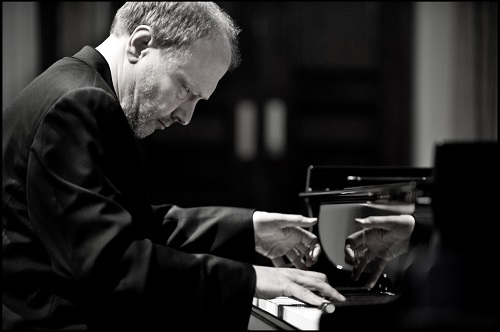 Switzerland Beethoven, Adams: Marc-André Hamelin (piano), Tonhalle Orchestra Zurich / Pierre-André Valade (conductor). Tonhalle, Zurich, 10.3.2022. (JR)
Switzerland Beethoven, Adams: Marc-André Hamelin (piano), Tonhalle Orchestra Zurich / Pierre-André Valade (conductor). Tonhalle, Zurich, 10.3.2022. (JR)

Beethoven – Piano Concerto No.1 in C major, Op.15
Adams – Harmonielehre for large orchestra
Former Music Director of the Tonhalle Orchestra Zurich, David Zinman, now 85, was supposed to have returned from the United States to Zurich to conduct this concert but his doctors advised against it. In stepped French conductor Pierre-André Valade, known for his affinity and capability with contemporary music.
The first movement of the Beethoven really only came to life with the lengthy cadenza. Hamelin’s playing was crisp and precise without in any way being particularly illuminating or sparky. The cadenza was, however, inventive, entertaining, almost jazzy at times, demonstrating Hamelin’s compositional aptitude. Valade did no damage, had a close rapport with the soloist, but took an undemonstrative, non-interventionist approach to the work.
The hymn-like Largo was imbued with warmth; delicate, unhurried but never languid. The final Rondo set off with a scamper, showing off Hamelin’s speedy finger work. Crisp articulation made the movement a sheer delight. The audience enjoyed every moment and warm, lengthy applause was amply rewarded with a Bach encore, not J.S. but C.P.E, his witty Rondo in C minor.

After some confusion over whether not there was or was not an interval, we moved on to another soundworld, that of John Adams. The composer says very candidly that though he recognises Arnold Schoenberg as a major influence on the development of modern music, he actively dislikes twelve-tone compositions and has been one of the central figures in developing tonal minimalism. Harmonielehre was the name of a publication by Schoenberg back in 1911, dedicated to Mahler, in which the principles of twelve tone music were set out. Adams’s work, scored for huge orchestra, has links to Schoenberg: not his later works but his early and mighty Gurrelieder, also to Sibelius’s Fourth Symphony and to Mahler and Debussy. Those who know Adams’s magnificent opera Nixon in China will instantly recognise a similar style in the massive first movement. It starts and ends with gunshot blows on the timpani (which Adams calls a ‘grinding of gears’) and was inspired by a dream of a supertanker taking off like a rocket in San Francisco Bay. The percussion section has its work cut out, racing between instruments and counting bars: they were a triumph.
The slow movement is entitled ‘The Anfortas wound’, so one expects shades of Parsifal. But no, instead there are references to Mahler’s Ninth and unfinished Tenth Symphonies. It is an eerie movement ending with an ear-splitting climax. Many members of the orchestra had ear-plugs at the ready, audience members sitting near the percussion had not been warned and were visibly ill-prepared.
The playful Scherzo entitled ‘Meister Eckhardt and Quackie’ (Quackie being a nickname for the composer’s daughter when she was young) is playful, with chiming bells and tinkly flutes, before once again building into a massive fortissimo, complete with galloping timps and a horn peroration.
Unless you really do not like your neighbours, this is not a work to hear through speakers: it must be experienced live. It is deafening – and utterly thrilling. Some consider Harmonielehre Adams’s greatest work. Most of the audience had, I suspect, never heard the work (indeed, heard little of Adams and his works before) and many did not know what had hit them. The performance by the Tonhalle Orchestra will have converted many to Adams’s compositions. They can hear more next week, when the composer comes over to conduct some of his other works. Fans of Adams are making a pilgrimage to see the composer. If you cannot get to Zurich, watch this space for my review.
John Rhodes
